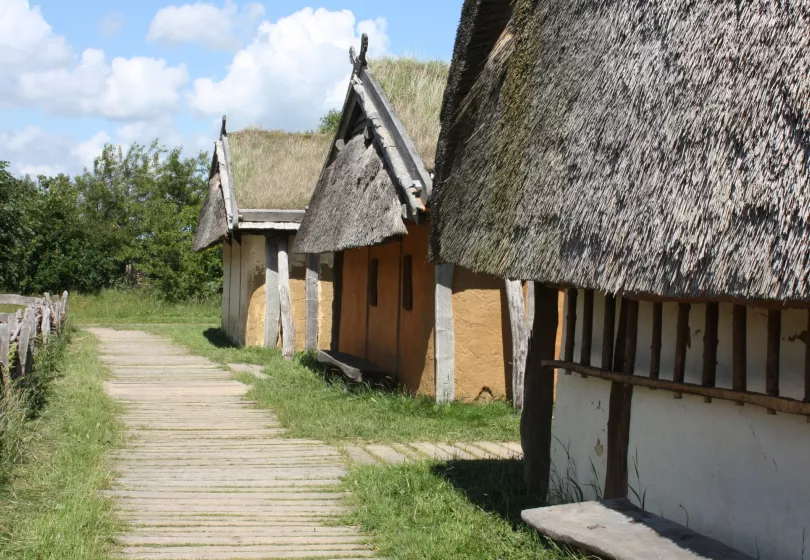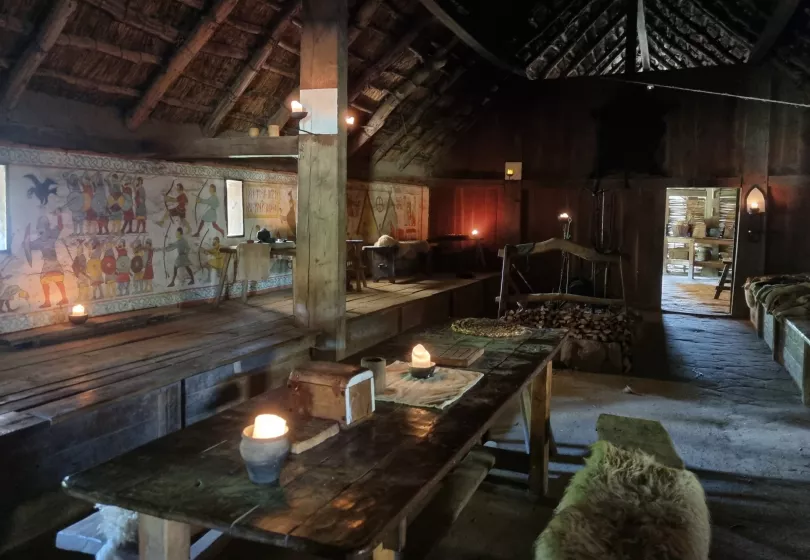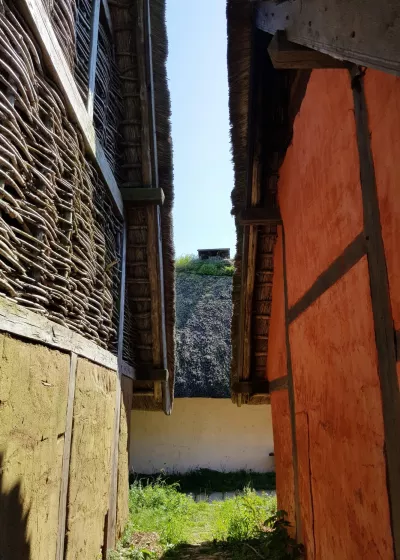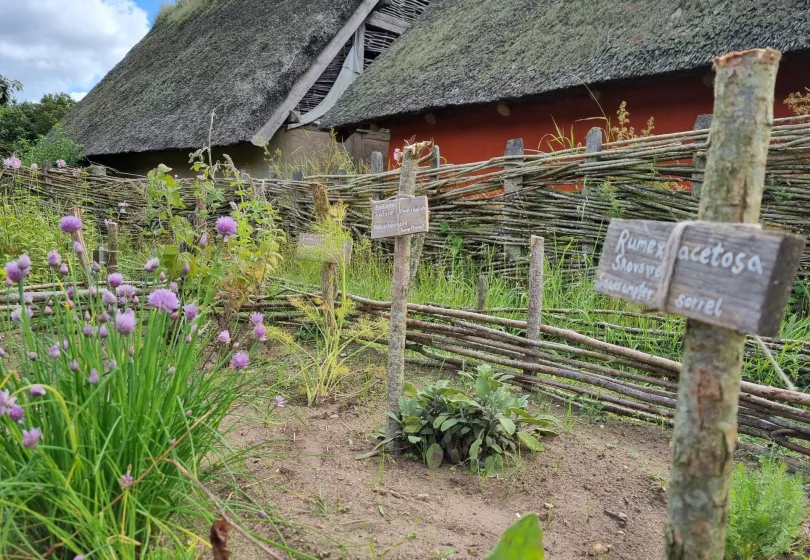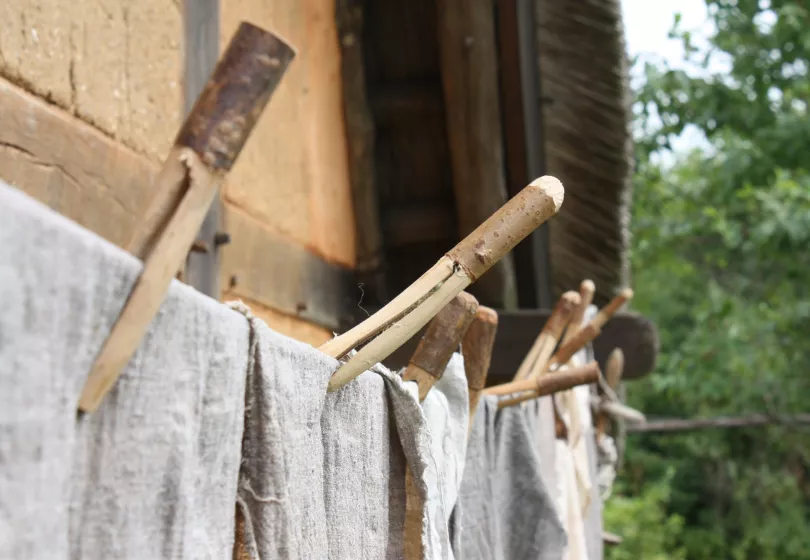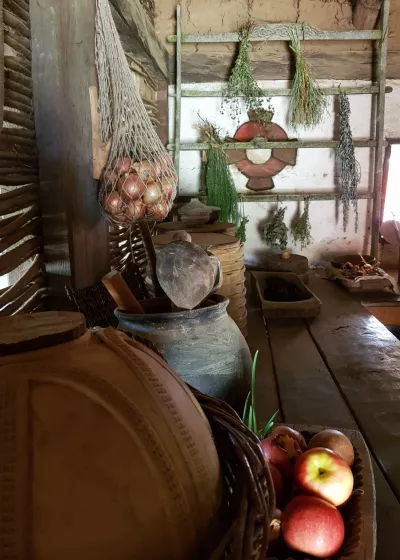A trading centre
The name Ribe first appears in Ansgar’s biography, written in about 870 AD, but we know that the buildings were then over 150 years old. Towards the west, Ribe had the river as a natural border, and in the first half of the 9th century, a 2-3 m wide trench and a low rampart were constructed in a semicircle around the eastern side. It was hardly a fortification, but rather a demarcation of the urban area, within which the town laws, rights and responsibilities had to be observed. In the last half of the 10th century, it seems to have become necessary to fortify Ribe, and the town trench was turned into a proper moat.
It is no coincidence that Ribe is located right where the ancient main arterial road crosses the rivers Ribe Å and Tved Å. Also, it was possible to go up the river by boat and arrive in the centre. Ribe is situated on the edge of the marshland where the risk of flood is less present.
Reconstructed town houses
Ribe VikingeCenter has reconstructed seven town houses found in two different locations in Ribe. The three houses to the north are three different versions of the same house found i Tvedgade in Ribe. It is the same construction, but with different types of roofs. The four houses to the south were found east of the station. They stand here as a group exactly like they did in the Viking Age. The fact that they stand so close and none of them revealed traces of stables, is the indication of a town area. Compared to other Viking villages, the archaeologists found far more remnants of handicrafts and imported goods in and around the houses in Ribe. It suggests that a number of professional craftsmen, who for the most part depended on their trade alone to feed themselves, lived here.
As you walk through Ribe VikingeCenter’s reconstruction of parts of Ribe Town as it was in 825 AD, you can get an idea of the way houses, streets and the like would have looked at the time. For instance, the plank-built roads were necessary to get around or it would have been quite muddy with all the traffic.
New snatches of history turn up every time the modern town is excavated to build cellars, lay pipes and so forth. However, the archaeological excavations are still made difficult by the current buildings.

